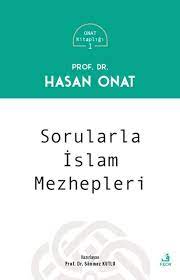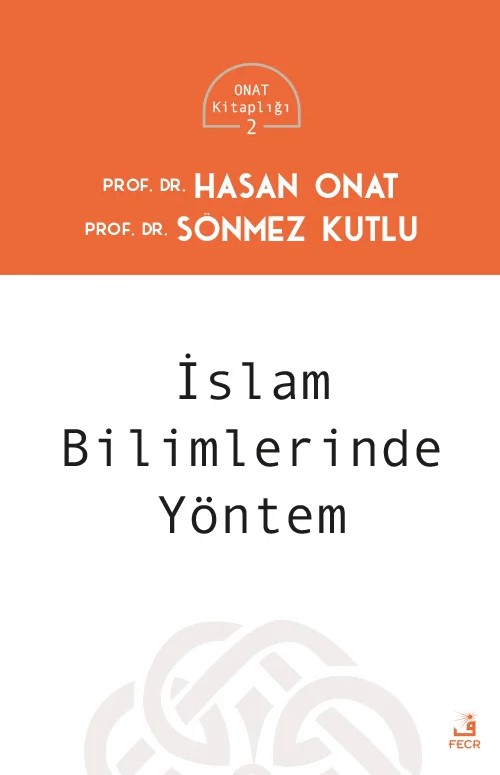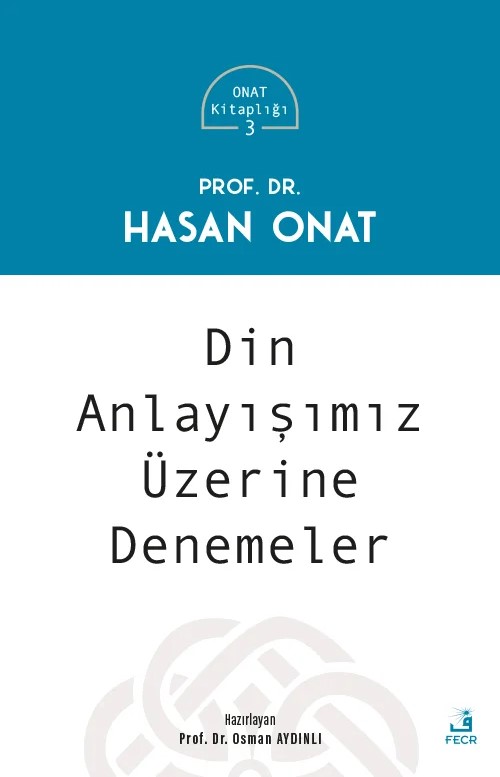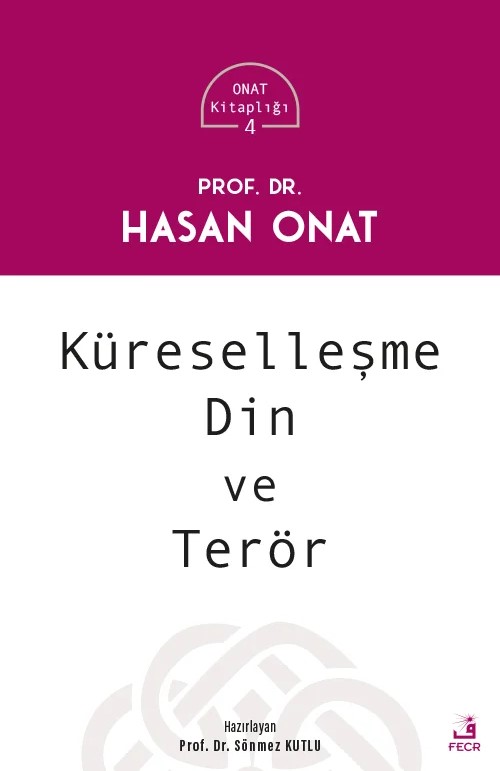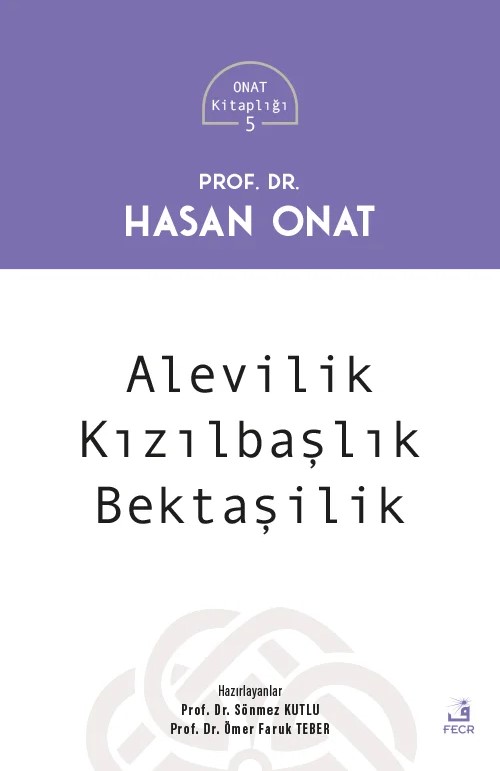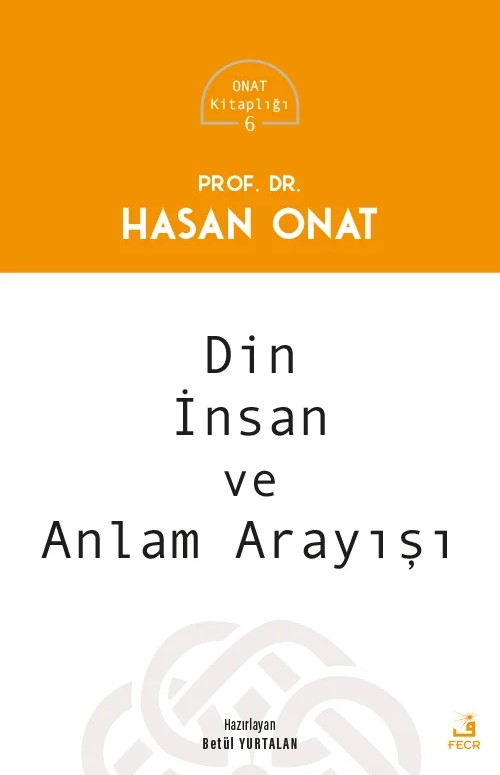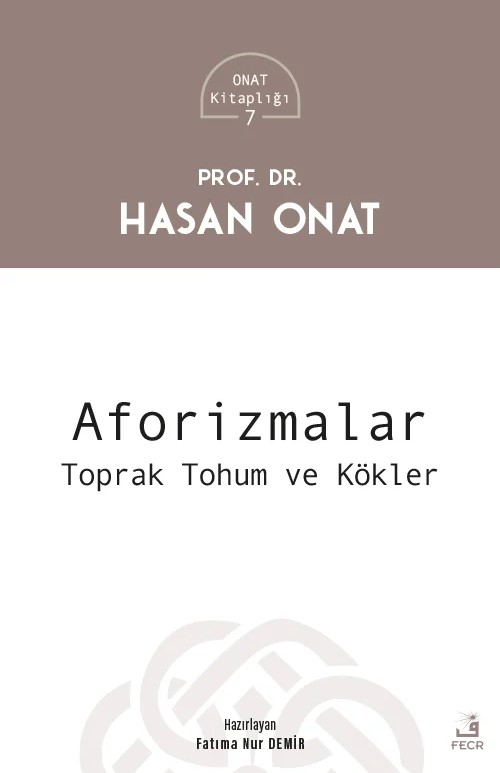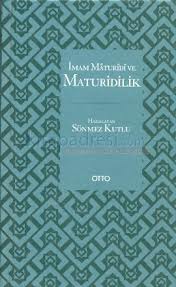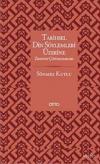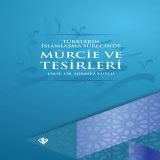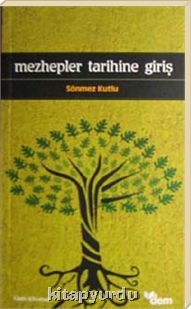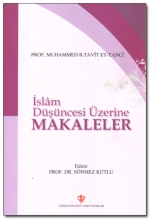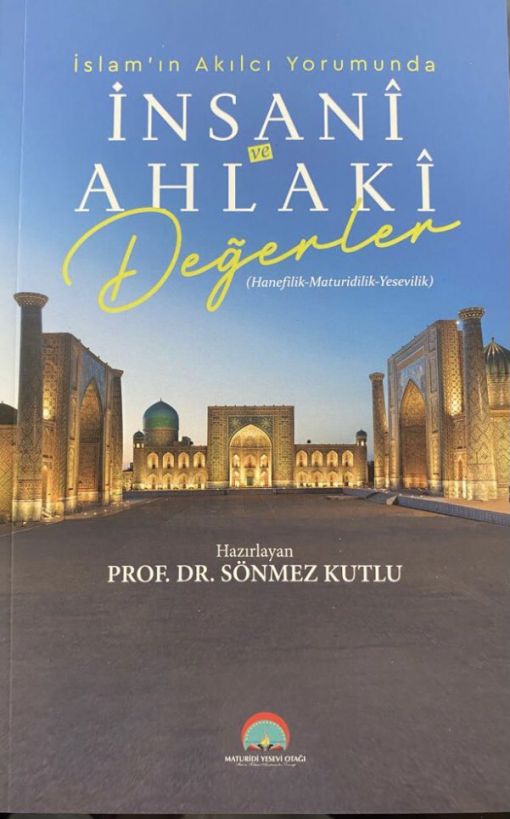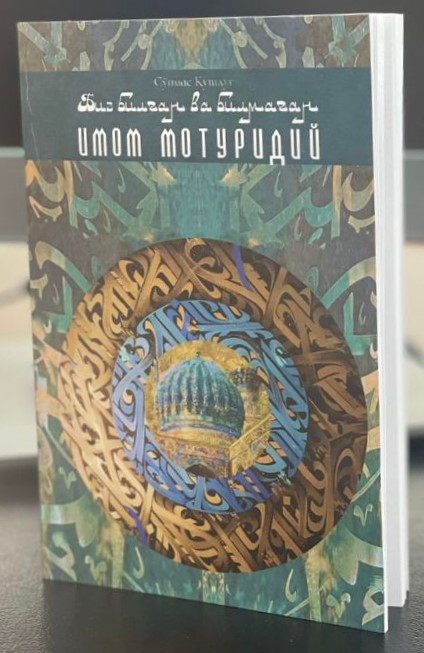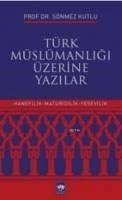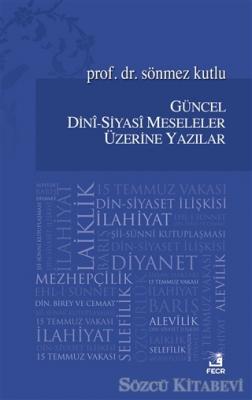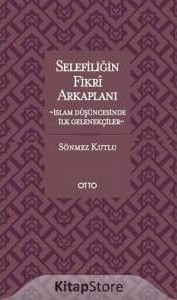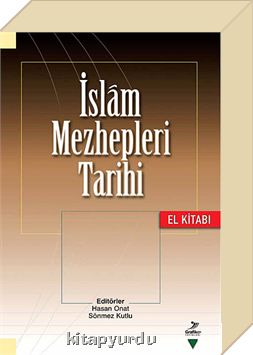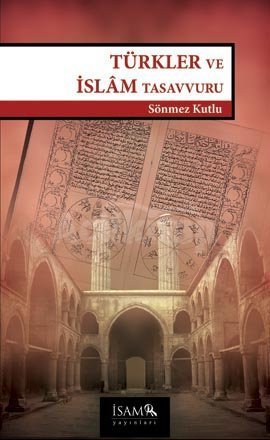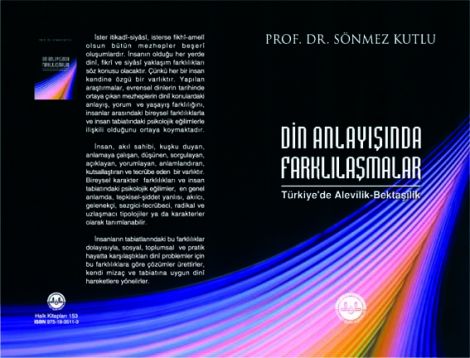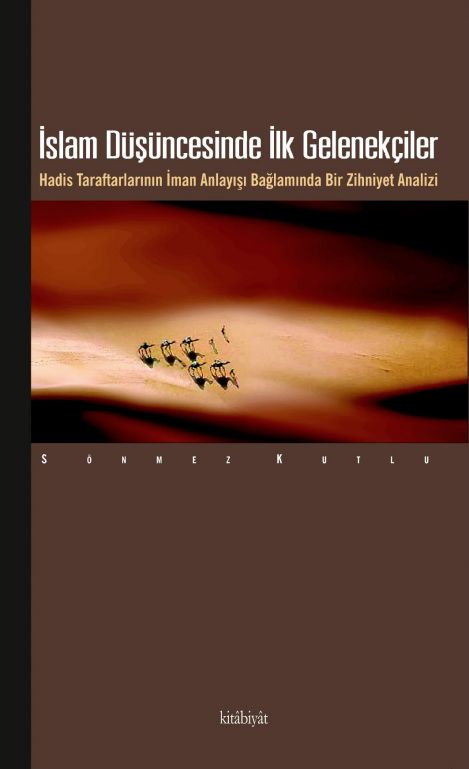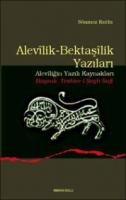HANAFĪ-MĀTURĪDĪ CULTURAL ENVIRONMENT OF RIZĀA’D-DĪN B. FAKHRA’D-DĪN  HANAFĪ-MĀTURĪDĪ CULTURAL ENVIRONMENT OF RIZĀA’D-DĪN B. FAKHRA’D-DĪN Central Asia and Idyll-Volga tribes met Islam and Islamic culture from the very beginning times. Shortly after that Islam spread in the region, Khorasan-Transoxania-Khorezm (Farghana, Marghinān, Sarakhs, Samarkand, Bukhara, Balkh, Marw, Balasagun, Shash) became the important cultural center and basin of Islamic civilization. This cultural basin has tremendous effect on during and after the Islamization process of Eurasia. Having guided the light of Islam and science for themselves, Turkish societies helped many nations to meet Islam and gather under the umbrella of Islamic civilization by means of their own piety. Eurasian geography has an important place in the formation of the sources ancient religious knowledge. In this region, Islam’s belief, worship-transactions and morality fields reinterpreted in accordance with the social, religious and cultural structure and social needs of the region, and in all three fields, information traditions have been formed. These closely interwined and meshed traditions have constituted three dimensions of religiosity upon the creedal, practical and moral aspects in Eurasia. The practical front of this religiosity was institutionalized as Hanafism, creedal aspect as Māturīdism and the Sūfī-moral aspect as Yasawism. All three became a single identity by complimenting each other. This rational understanding of religion aiming to spread the Word of God from Transoxania to the Europe and the most remote corners of Africa, played a dominant role in the development of Islamic civilization and introducing Islam to the World for more than a thousand years. Among the prominent representatives of this tradition, we could mention Abū Hanīfa, Māturīdī, Abu’l-Muīn Al-Nasafī, Sarakhsī, Marginānī, Kafawī and Ahmad Yasawī. Through the intense migration beginning from Central Asia this tradition extends from the south to Anatolia, from the north to the Balkans and the Caucasus throughout Idyll-Volga, from there to the inside of Europe. The fiqh books written in this region constitute the basis of the fiqh on which religious-social life arranged in Khorasan, Anatolia, Balkans and Caucasus. The works that written in the Transoxania, Kharezm and Idyll-Volga regions, were then taught in madrasas in these regions for many years and hundreds of commentaries and inscriptions were written on them. Some of these works are al-Mabsūt of Shamsu’l-aimma al-Sarakhsī (483/1090), al-Mukhtasar of Kudūrī (428/1037), Bedāiu’s-Sanā’ī fī Tartīb al-Sharāi’ of Alāuddīn al-Kāsānī (587/1191), Fatawā of Kadikhan Fakhraddīn al-Farghanī (592/1196), al-Hidāyah of Burhānu’d-dīn al-Marghinānī (593/1197), Kanzu’l-Wusūl ilā Ma’rifati’l-Usūl of Ali Pazdawī (482/1089-90) and Tankīhu’l-Usūl of Sadrushsharī’a ‘Ubaydullah b. Mas’ūd (747/1346-7). One of the most important achievements of this cultural basin is the formation of a theological system in accordance with the cultural and social structure of the region called Māturīdism. by systematizing the Islamic beliefs and founding it rationally. In this way, scholar have succeeded to resist external perceptions which may lead to conflict in religious thought. The second important achievement is the formation of an epistemology required by Imam Māturīdī to produce religious knowledge. In this theory, reason, senses and narrations are taken as basis in the production of sound, reliable and accurate knowledge. This theory was studied for a long time in Eurasia in the production of ancient religious knowledge, but later this rational epistemology began to be abandoned and a traditionalist-conservative understanding tried to gain a seat. All over the Eurasian geography, numerous works, commentaries and inscriptions were written advocating Māturīdism and supporting its views. Some of those known Māturīdī theologians are Imām Māturīdī, al-Hakīm al-Samarkandī (342/953), Abū Salama al-Samarkandī (second half of 4th century), Abū Ishāq al-Saffār al-Bukhārī (534/1139), Abū Yusr al-Pazdawī (493/1099), Abū’l-Muīn al-Nasafī (508/1114), Nura’d-dīn al-Sabūnī (580/1184), ‘Umar al-Nasafī (537/1142), Sıraju’d-dīn al-Ushī (575/1179), Mankubars b. Yalinkilinc al-Turkī (652/1254), Abū Hafs al-Ghaznawī (593/1197), Abū’l-Barakāt al-Nasafī (710/1310), Sadr al-Sharī’a al-Sānī (747/1346). During the Ottoman period, many theologians belonging to Māturīdī tradition and defending it were raised. Ibnu’l-Humām (861/1456), Khizir Bey (863/1458), Hayâlî Ahmad Affandi ( 1470), Ibn Kamal Pasha (940/1534), Kamala’d-dīn Baydawī (1687), Mestcizade ‘Abdullah Affandi (1148/1735), Akkirmanī Mehmed Affandi (1174/1760), Galanbawī Ismā’īl Effendi(1205/1791) are the most knowns. The works written by Turkish theologians occupy an important place among the general theological works. Almost all Turkish scholars are the members of Māturīdī sects of Ahl al-Sunnah. Hence, these works were written in order to explain Islamic creed via theological method of Māturīdī sect or to defend it against its opponents. Turkish theologians have written works not only about kalām but also in the other fields.[1] Many scholars who took office in the Ottoman madrasas such as Khizir Bey, Ibn Kamal Pasha, Hayalī Ahmad Effendi, Galanbawī, Akkirmanī defended Māturīdism against Ash’ārism. Likewise, Tatar Jadidist Marjānī (d.1889), Kursawī (d.1812), Ismā’īl Bey Gaspirali (d.1914), Rızāu’d-dīn b. Fakhra’d-dīn (d.1936), Musa Jarullah (d.1949) were among those who advocated Māturīdism or the rationality that it represented and tried to disseminate his views. Briefly, in the Eurasian geography, the theological dimension of religiosity was represented by Māturīdism. So that theological works belonging to this tradition have attracted attention all over the Eurasian geography, even not only attracted attention, dozens of commentaries and inscriptions were written on it. The commentaries and inscriptions written in Central Asia, the Balkans, Anatolia and the Caucasus upon the Aqāid of ‘Umar al-Nasafī (d. 537/1142) in the languages of this region are the clear indication of the situation. Even for the commentaries of the Aqāid of ‘Umar al-Nasafī, inscriptions from every corner of Eurasian geography werw written. Some of these are Muslihu’d-dīn Mustafā al-Kastalānī (d. 901/1495); Hakīm Shah Muhammed b. Mubārak al-Kazwīnī (d. 920/1515); Ramazan b. ‘Abdu’l-muhsin Bihishti (d. 975/1571); ‘Isāmu’d-dīn Ibrāhīm b. Muhammed Samarkandī (Isfarayānī) (d. 951/1544); ‘Abdu’l-hakīm b. Shamsu’d-dīn Muhammed Siyalkutī (d. 1067/ 1667), Sachaklizade Muhammed Mar’ashī ( 1150/1737); Karabash ‘Ali b. Muhammed al-Kastamonī ( 1097/1686) ve Marjanī (1889). Idyll-Volga, one of the important regions where Islam was first spreaded, became one of the important centers of Hanafī-Māturīdism which was the representative of Ra’y/Akl (reasion) supporters in the 18th and 19th centuries. After Bukhara, Samarkand and Istanbul madrasas, Kazan and Ufa madrasas started to make their name. Kafawi's A’lāmu’l-Ahyār and Marjanī's biography work show that there is a strong Hanafī vein fed by Samarkand, Bukhara, Fergana, and Harazms and there was Yasawism, represented by their dervishes who had migrated from Turkistan. In particular, Marjānī and Kursāwī, “the source of innovative ideas, with the existing structure of the Tatar culture, Ash'arî Kalam which prevailed in his time, responded with the understanding of Māturīdī Kalam, criticized the Ash'ari theologians in particular Taftāzānī, especially in terms of adjectives,”[2] Yasawism that takes place in the spiritual life of the Turkish communities living in nomadic life and shows a certain degree of resitance to infiltration of foreign cultures, was also produced in the Mawaraunnahr culture basin. The first representatives of the earliest sufism tradition, which began in Central Asia with the adoption of the Turks by Islam, were the Turkistan Dervishes who were educated in the Yasawî and Hanafī- Māturīdī madrasahs. Ahmad Yasawī (d. 1167) is considered to be the founder of the Turkish folk Sufi tradition and is therefore called Pîr-i Türkistan.[3] Yasawism was the source of the emergence of the Naqshbandism which was formed in Mawaraunnahr towards the end of the 14th century and which was effective in the Eurasian geography and the Bektashi tradition organized in Anatolia and Balkans in the 15th century. Because of this influence of Ahmad Yasawī, he was given the title of Hâce-i Turkistan.[4] Yasawism, both during the lifespan of Ahmad Yasawī and after his death, was developed by the caliph Hākim Atā (d.1616), that is Süleyman Bakırgānī, Mansur Atā (d. 1119), Saīd Atā (d. 1281), Haci Baktaş Velī and other Yasawī dervishes and spreaded all over Turkistan, Harezm, Khorasan, Azerbaijan, Balkans, Idyll-Volga and Iran.[5] With the Mongol invasion, not only did it enter Anatolia with large waves of immigration, it also affected the Balkans.[6] Yasawism ensured both the converts to Islam of the people in its homeland and facilitated many nations settled in the Eurasian region to embrance Islam. The dervishes and sufis who grew up in Bukhara and Samarkand Madrasas, traveling with trade caravans, By conquering the hearts of people living in Idyll-Volga, Khorasan, Anatolia, Caucasus and the Balkans and and enlightening their mind, they made these lands ready for conquest.[7] Yasawism, which was produced in Mawaraunnahr, developing a unique understanding of asceticism and was able to protect itself against Shiism and over-western interpretations like Safavid lodge and some other Sufi formations. The activities of Sufi schools have been observed in the Idyll-Volga region in the north of Anatolia and in the Caucasus from a very early period. Yasawism and Naqshbandism (Muceddidī and Khālidī) were the most powerful Sufi traditions that continued to exist extensively from the 13th century until the first half of the 20th century. As it is understood from a record in a small treatise called Şerīatü’l-Īmān, especially Yasawism was highly respected among the people and in the madrasas in Idil-Volga. In this treatise which aims to teach the principles of faith and some Qur'anic suras and prayers in a simple way with short questions and answers that understood with widely reading and reprinted repeatedly, it is very interesting to be asked for giving the answer which is “From the Khoca Ahmad Yasawī chain” to the question “who will tour from the chain?” [8] Hanafism, Māturīdism and Yasawism that permeated all areas of life in the whole Eurasian geography and created in Mavaraunnahr, soon became an integral part of each other. In the 18th and 19th centuries, at some catechism books written in the region and books on Islam clearly state that Turkish societies are “Hanafī in fiqh, Māturīdī in creed, and Yasawī in tarika/order.” As a result, the Islamic civilization in Eurasia has conquered the hearts through these three traditions. Today, when we examine the written religious literature that is inherited us in this geography, it will be seen that these three intertwined traditions have literary fruits. Imam Māturīdī gave the fatwa that ,in a town, the settlers should pay the expenses of the students who were getting education. In the Hanafī- Māturīdī -Yasawī tradition, I would like to give an example on the fact that science used to seen as a religious duty and on the illegitimacy of ignorance. We all know that learning science is obligatory for every man and woman. This is a hadith, but the extent to which women can participate in this issue is controversial. Scholars adopted exactly the meaning of this hadith. However, Semerkandî, who commented on Māturīdī's Ta’wīlāt, made an addition which is very important for the history of Islamic sciences and perhaps may be called as a revolution, based on the importance given to science in the Qur'an and Hadith. "Knowledge is obligatory, ignorance is forbidden."[9] Two different perspectives, known as the Traditionalists and Jadīdis, emerged from the beginning of the 1800s in the Hanafī-Māturīdī tradition of the Idyll-Volgal region. Shibu’d-dîn Marjānī (d. 1889), one of the prominent figures of the Newest/Jadīdist movement, was a member of Hanafī in fiqh and Māturīdī in kalam. Marjānī usually is under the influence of this tradition in his approaches and defends his ideas as someone who represents them. However, he did not neglect to take advantage of other approaches existing in Islamic thought from Sufī, philosophical and Ash’arī traditions. The Tatar Jadīdis like the Ottoman scholars had also concentrated on the Ash’arī- Māturīdī discussions; which of these two schools represents the Ahl al-Sunnah; the relationship between reason and revelation; whether Takwin (Creation) is an attribute or not; partly Freewill (juz- i irâda); Four Principles (Mukaddimatü’l- Arbaa) that also concerns the fıqh; and the similar problems. Marjānī had submitted important opinions on these issues with his commentaries written down to Akīda al-Nasafī and Tankīh and with his other works. In particular, Marjānī considered the commentary of the Akīda al-Nasafī of at-Taftazānī, who was a member of the Ash’arism, as the struggle for discreditation of the Imam Māturīdī and the Māturīdis, and he himself wrote a new commentary to the Akīda al-Nasafī. In this paper, although the other works are used, Marjānī's relationship with Hanafī-Māturīdī cultural environment will be especially analyzed from the above mentioned two works. In addition, it is desired to bring vitality again to the rational method (al-Ra’y) used by Hanafism for solving problems. Clarifying his relationship with this tradition will contribute to the understanding of the cultural environment of the Jadīdists and their efforts to renew Islamic thought today. Starting from the Hanafī-Māturīdī tradition; Kursawī (1812), Marjānī (1889), Abdullah Bubī (d.1922), Rızāu’d-dīn b. Fakhra’d-dīn (d. 1936), Ismā’īl Bay Gaspirali (1914), Musa Jarullah (d. 1949), Fıtrat and et cetera; many people wrote works. This renewist movement formated by these people was called Jadīdism. In fact, this movement consisted of an attempt to reform religious knowledge or to update the ancient religious knowledge based on the own sources of Hanafī-Māturīdī culture. This idea also had a great impact on Samarkand-Bukhara and Fargana basin. However, Jadīdism, which was generally based on Hanafī-Māturīdī sources of information, was declared a time-modernist and condemned. In opposition to this movement, a reactive understanding developed again within the Hanafī-Māturīdī tradition as Qadīmists or Traditionalists. For criticizing some manifestations of religiosity among the people and their understanding of religion, the first was accused of Wahhabism by the latter. In spite of all this, the Jadīdists left an important literature that has left deep traces of the updating of classical religious knowledge.[10] In the Qadīmism- Jadīdism conflict, the Russian Tsarism stood rather in favor of the Qadīmists.[11] The Soviet Union had been wanting to destroy the interest in Islam in the eyes of the people by calling the manifestations of Islamic vitality the name of Wahhabism. They also aimed to pit the Jaditists and the Traditionalist (Qadīmists) against each other who had emerged to update the ancient religious knowledge in the Hanafī-Māturīdī circles. According to the new generation of Ulamas, the including of local cultural traditions into Islam was described as innovation (bid’at). In fact, the Soviet authorities supported it in order to eliminate traditional Islam and piety among the people. On the one hand, he tried to overthrow the traditional understanding and on the other hand tried to discredit the new understanding of Islam by stamping it as Wahhabism. For this reason, the disagreement between the young generation of ulama and their teachers came out. The Soviet Union probably secretly supported the departure from the Hanafī-Māturīdī tradition. In this way, the religious knowledge in Eurasia was cut off from the ancient tradition and fed it from the Arabian world. Rizaa’d-dīn Fakhra’d-dīn lived in a strong Hanafī cultural basin where Hanafī-Māturīdī sources were taught and the Kadīmist and Jadīdist tendencies competed with each other. At the beginning of the works taught in the madrasas in Kazan and surrounding area, the Aqīdah of ‘Umar al-Nasafī, Qasīdatu’l-Amālī of Sirāju’d-dīn al-‘Ushī from Farghana, the Aqīdah, Sab’atu’l-‘ajizīn and the Sharh of Ustuwānī which summarize Māturīdī theological system, and Hidāyah of Marghinānī, Multakāh of Qudurī dealing with the Hanafī fiqh in general were the works in the lead. In this term, some of the scholars of Kazan were in a close relation with Bukhara and Samarkand madrasas where Hanafī-Māturīdī education and training continued. Those who had opportunity went and took education in these madrasas. Rizaa’d-dīn Fakhra’d-dīn’s beloved teacher Marjānī was a scholar who studied in the madrasas of Bukhara and Samarkand and made researches there. After discussing with the scholars there and arguing manuscripts, there had been major changes in Marjānī’s perspective. He became interested in their scientific value without distinguishing any sectarian member.[12] Besides Marjānī, Kursawī and ‘Ālimjan Barudī, who were educated in Bukhara and Samarkand Hanafī madrasas for a while were in the lead of the Kazan Hanafī scholars from whom Rizaa’d-dīn Fakhra’d-dīn was influenced came. However, we can see that after he met Marjānī, Rizaa’d-dīn Fakhra’d-dīn, who could not find the opportunity to travel these regions and other geographies for educational purposes read Sharhu’l-Aqāid in the madrasa of Shilchali and taught it later.[13] The Kazan scholars knew Hanafism and its classical sources, but they did not know the theological works of Māturīdism in the same extend. They from teaching Māturīdism from the sample aqīdah works above mentioned. Also they did not see the Kitābu’t-Tevhīd of Imam Māturīdī just like the Ottoman scholars. Probably, Tabsiratu’l-Adillah of al-Nasafī was not scrutinizing in the madrasas. Māturīdism was learned through the Sharhu’l-Aqāid which Taftazānī wrote to altar of ‘Umar al-Nasafī. In this work which was written to reconcile between Imam Ash’ārī and Imam Māturīdī, the views of Imam Māturīdī in the issiues that he was close to Ash’ārī were mentioned. Where he was close to Mu’tazila, his name was not given. Marjānī was the first one noticing this and for this reason, reinterpreted the work of ‘Umar al-Nasafī under the name of al-Hikmatu’l-bālighatu’l-jinniyye fī sharhi’l-Aqāʾidi’l-Hanafiyya (Kazan 1888). In this work, it is tried to put forward the method of Salaf scholars and rational and narrative evidences were examined. In this work, Marjānī talked about Imam Māturīdī’s theological opinions and Māturīdism with shame using Māturīdī theological literature. Even though Rizaa’d-dīn Fakhra’d-dīn influenced by Kadīmist initially, after meeting Gaspirali, Jamāladdīn Afghānī, Marjānī and others and reading their works, he preferred second group. Although he did not receive a well-established education and initially influenced by zealot (Kadīmist) Hanafī circles, after the meeting Marjānī who was described as the leader of the contemporary religious renewal movement by Yusuf Akçura who was one of the most important representatives of the reformist wing of Hanafī- Māturīdī tradition in 19th century among the scholars of Kazan and reading his works, especially the work Nāzūra in which he advocated that night prayer must be practiced in the short days in the northern countries and where he criticized theologians’s views about faith and ma’arifah, he had to admit that his ideas previously received from Kadīmist circles were shaken. “The aqīdas, ideas and profession that we have accelerated up to that day have been destroyed.”[14] Rizaaddīn Fakhraddīn wanted Jadīdist system in the education and teaching of Islamic sciences, renewal in the working out problems of Muslims that is to say the needs of the day religious thought should be solved by means of intellectual activities like qiyas, ijtihad, ijma’ and etc., and new fiqh books to be written. For this, he proposed the establisment of ijtihad and ijma’ assemblies consisting of scholars and experts. Rizaaddīn Fakhraddīn was able to think differently on some issues as a result of his adoption of free thinking while he shares the same views with Marjānī on many issues like the development of a new educational method for the madrasas in the education and teaching Islamic sciences (jadīd), the reform of educational institutions and rewriting of textbooks with a new method, the renewal of religious thought (tajdīd), critical approach to classical kalām and fiqh sources. After Rizaaddīn Fakhraddīn established strong ties with the innovative Hanafī- Māturīdī cultural environment, there were major changes in his views about the other sects. Especially after being acquainted with Marjānī and his ideas, he abandoned his previous sectarian fanaticism. He said, he is in the same affinity with the all Muslims who says “Lā ilāha illallāh, Muhammadun Rasūlullah”.[15] He criticised the Works conveying vicious philosophical debates in madrasahs and the teaching of Kalām books by saying: “The way is open for people who want to obey the Ahl al-Sunnah wa’l-jamaāt sect. ..For those who say I will fix my creed, follow the Ahl al-Sunnah sect, seven-eight verses from the Holy Qur’ān is enough to know. There is no need to spend life with Kalām books and to be Ash’ārī and Māturīdī. Even there is no difference between to incline Kalām books, works like Makāsid, Mevāqf, Tajrīd, Matali’, al-Muhassal and Tawali’ with the purpose of correction of creed, and trekking nearby a train on the railroad. Dealing with Kalām books, Ash’ārī and Māturīdī books in order to become Ahl al-Sunnah is a pointless and unobtrusive effort like departing of someone from Moscow to Macca through London or Beijing.[16] Rizaaddīn Fakhraddīn, because of his defense of freedom of thought, rationality and innovation, has shown great interest to the sects and personalities who have made significant contributions to these issues in the Islamic thought in the past and benefited from their ideas. In fact, contrary to Hanafī-Māturīdī circles, he used expressions praising the contributions of Mu’tazilah to Islamic thought: “The Mu’tazilīs were knowledgeable, prudent, intelligent and patient people. They did not consent to the emergence of wars, conflicts, disputes and disorders among Muslims. At the same time, they were very meticulous about religious service, ready to sacrifice their goods and lives in this way. It was Mu’tazilīs who emerged at that time to defend and protect Islam with life and skin, and opposed heretics and profanes that rebelled against Islam. They created a science that became famous as kalām for their purposes, and did not allow the enemies of Islam to attack the Islamic religion, moreover they always defeated them. ..Imitation is never permissible, everyone should work as much as they can, the words of Mu’tazilīs were far more abiding and text (sound) than the others since people are responsible for their own jurisprudence is one of the basic principles of Mu’tazilah. It is known that the walk of the trained and untrained horse cannot be one. Those who made and developed the science of Usūlu’l-fiqh are also Mu’tazilīs. These professions of the Mu’tazilīs were accurate and right (honest); yet because of time did not allow, the right was defeated by void.”[17] Rizaaddīn Fakhraddīn as a person believing in the necessity of renewal in Islamic thought, has written biographies of non-Hanafī and Māturīdī sects such as Ghazzalī, Ibn Taymiyyah, Ibn Rushd, Ibn ‘Arabī and Abu’l-Ma’arrī witout considering their sectarian tendencies. During the Ottoman period in the Hanafī circles, generally Ghazzālī was not mentioned with devotion because of his criticism of Abū Hanīfa and Hanafīs. He had more reputation in the Sūfī circles. Likewis, the Ottoman scholars did not have a positive look for Ibn Taymiyyah because his contradictory ideas to Hanafī fiqh and Māturīdī theological system. “We did not know the existence of those who engaged with the works of Ibn Taymiyyah among the previous scholars and the contemporaries of Marjānī in the Kazan Hanafī cultural basin.; he was not known and consulted before. However, it is known that the most of our young scholars today are familiar with the works of Ibn Taymiyyah and Ibn al-Qayyim.[18] In particular, Alimjan Barudī and some scholars of the new generation were interested in Ibn Taymiyyah and made positive and distant evaluations about him if his views on Sufism was left to put aside. In a letter he wrote to Rizaaddīn Fakhraddīn on this subject, Ibn Taymiyyah was evaluated as follows: “In the early days, in Russia, I was possibly only one as the owner of the wishful thinking about Ibn Taymiyyah, I suppose you agree with me later on. The profession of Ibn Taymiyyah is generally beautiful. I benefited from Ibn Taymiyyah through the works of Kannawjī(?)[19] which had initially been interest to me since 1872, and later personally and without intermediaries. Most of the bets put forward by their opponents - I believe - are unsubstantiated. His own knowledge and heart is a strong person, every word and the way (profession) he has kept is brave and courageous; but he would not have been nurtured in the way of Sufism and did not receive a share of their pleasures. Hence, I presume that his knowledge, which is as vast as the ocean, remains at the official and expansive level. These are words against and against a loved one. It is observed everywhere that active young people (shubban-ı nāhida) blindly imitate Ibn Taymiyyah, even though they are willing to give up imitating the four sect imams. I think this is rashness.”[20] Rizaaddīn Fakhraddīn does not object to Alimjan Barudī's beliefs about Ibn Taymiyyah, but opposes the claim that active young people abandon the four sects and imitate him and explains that they do not imitate Ibn Taymiyyah and think completely different in this way: “We have a couple of words to say to honourable Alimjan his nibs. It is obvious that it is unreasonable for the active youth who say that imitating the famous sect imams is not obligatory (if necessary) and that they defend the necessity of imitating Ibn Taymiyyah. From this it is understood that their ideas are in a different way. There was no harm in exchanging ideas with them and taking their aims directly from them. Since such a service would fall to the merciful and moral scholars if they had undertaken this, they would be one of those who solved the misunderstandings.” [21] Rizaaddīn Fakhraddīn learned Ibn Taymiyyah in his conversations with Jamaladdīn Afghanī on the idea of Islam, probably when he arrived in Petersburg. In these conversations, Afghani argued that “the old way of training and education was better than the present, and as evidence for this he was claiming the old way of training and education brought to the Islamic world such personalities as Farabī, Ibn Sina, Fahruddīn Razī and Ibn Taymiyyah.”[22] But his interest and admiration for Ibn Taymiyyah should not be understood as his connection with Wahhabism and Salafism. As far as we can identify, he does not mention Salafism and their approach in his works. For he argued that Islam is a religion open to development and renewal, opposed to oldness: “In fact, Islam is opposed to conservatism and old-age, not to religious innovation and progress.”[23] In addition, Rızaaddīn's praise of Mu’tazila, his putting forward philosophical figures, his writing biography of Ibn ‘Arabī, defending the establishment of a suprasect council of ulama and mujtahids in fiqh, his defense of innovation and his critique of antiquarianism are impediment for him to adopt Salafī-Wahhabī point of view. His interest in Ibn Taymiyyah and Ibn Arabī, located at opposite poles, was to make use of these personalities in the renewal of Islamic thought, to introduce these individuals correctly, and to put forward the diversity in Islamic thought and to create a healthy environment for making sectarian debates by preventing sectarian fanaticism. His interest in these individuals may have increased after he met the Afghanī in 1888 or after reading the articles and works of Rashid Reza, who praised Salafism, Ibn Taymiyyah and Muhammad b. Abdullah. Therefore, it can be said that his interest in Ibn Taymiyyah began many years before his visit to Mecca and Medina in 1926 upon the invitation of the Hejaz Kingdom. [24] However, Rızaaddīn followed magazines about religious thought in the Islamic world, even though he did not leave Kazan. In his biography of Jamaladdīn Afghanī, he referred to him as "a mujaddid who awakened the Islamic world." In his study of Rizaaddīn Fakhraddīn, Türkoğlu rightly says that “he knew Ibn Taymiyyah, Abu’l-A’la al-Ma’arrī, Ibn Rushd and Ghazzalī by means of Afghanī people and he wrote the biographies of these four people.[25] His aim is to develop institutions and new methods to educate similar scholars in their own period. He expresses this dream he wants to realize: “Islam, which comes to mankind for improvement, has nothing to do with the belief that the old religion requires constant renewal and correction since it necessitates constant revival (tajdīd) and reform. That is why Islam and Muslimism have spontaneously weakened, the sciences of Andalusia and the accumulation of Baghdad were moved to Europe and America. (…) The Islamic world has been barren in the extraction of great people. Today’s Ghazzalīs, Zahabīs, Ibn Taymiyyahs (…) are grown from big universities like Sorbon and Oxford.”[26] Rizaaddīn Fakhraddīn says that he read many of his works while he was writing his biography of Ibn Taymiyyah. Therefore, it would be wrong to say that he was not influenced by Ibn Taymiyyah's ideas. In particular, two of his writings about Islamic monotheism which he wrote to the Islamic Journal in 1916 give some clues about this. In this article, it is seen that the Sūfīs criticized the concept of monotheism and was seen close to the concept of monotheism of Ibn Taymiyyah: “Since the basis of Islamic religion is “tawhīd”, Haq subhānahū ta’ala invited to “tawhīd” to root “shirk” out His prophets. Moreover, monotheism is the essence of the Islamic belief. Unless there is unity, it is certain that other good will not give any saddle. Tawhīd is not completed by proving only “existence, creation, and assent about Haq subhānahū ta’ala. The unbelievers of Mecca and the Arab idolaters used to believe in Haq ta’ala his nibs. They believed that God existed and that he was the creator of earth and heaven. Yet more they call the things that believed to be god as creatures.”[27] Rizaaddīn Fakhraddīn accepted the request of support and help from the dead and putting the mediator between Allah and His servant (mediator and intercessor) as deprivation of tawhīd rejected by the Qur'an and criticized: “In recent times, the Islamic world has been addicted to asking for help and private complaintfrom the dead. In every country and province, a grave or many graves were paid for pilgrimage places and Hajar al-Aswad. The assemblies were filled with news of oracles, and the libraries were filled with books that narrated the wonderful works of the sheikhs. But all this cannot prove that these conditions are acceptable to the Shari’a. Those who ask for help and protection from the saints and the deads are deprived of genuine monotheism that the Qur'an invites. In this respect, there is no difference between making means of icons and idols and making humans mediator and intercessor.”[28] Rizaaddīn Fakhraddīn closely followed the Ottoman Empire, which he saw as a Turkish state, and had a deep love for it. For this reason, he did not find the Wahhabis' rebellion against the Ottomans correct, and criticized the Wahhabis' black propaganda against the Turks in the newspapers. Türkoğlu makes the following observations regarding his sensitivity in this regard:[29] “Rizaaddīn Fakhraddīn is not only fighting against the Turkish name opponents in Russia, but also opposed various smear campaigns in the Arab media about the Turks. The al-Qibla newspaper issued in Mecca published an article full of slander and falsehood about the Turks, claiming that Turkish soldiers had fired bullets at the Kaaba during the clashes that took place in Mecca between Turkish soldiers and Sharif Hussein's forces.[30] Rizaaddīn Fakhraddīn responded to these slanders about Turks: It is not known to us meaning of there is no assurance because Turks do not make any kind of kayd (cheat) and makr (cheat, trick) about Rasulullah. When the people lost their way in the seas of savagery, and at a time when their minds did not prevent them from committing all kinds of misdemeanors, the graves were sure of the Turks. If El-Qibla magazine doubts our words, let it apply to history. Will the Turks see the vengeance of the graves as well? But they see more than the Arabs. If he cannot see for himself because his eye is weak, we take the finger-impulse service upon ourselves. The British, the masters of the Arabs in Medina and Mecca, now took the body of Muhammad Ahmadī buried in Sudan from his sarcophagus and burned. Al-Qibla must have known this. We know that the Turks have repaired the Kaaba, but we have not heard that they started to destroy it. If the Arabs gathered in the Kaaba and fired against the government, the bullet fired by the Turkish military with the intention of defending and appeasing the rebellion touched the Kaaba, it does not mean they started to destroy Kaaba. If it is necessary to find someone guilty in this situation, it is necessary to find the person who takes aim and shoots at the Kaaba to blame. Although it is not harmful to say the words like The Turks are not cynical, rude, very harmful peoples for Islamic religion, Turks are lazy! in a lazy assembly where two or three people gather and sit, printing it out the press pages is now a great rudeness. Today, there are about a hundred million Turkish children in various continents of the world and subject to various governments. There is no possibility that they are consent to these undreamt slanders. Rizaaddīn Fakhraddīn did not only criticize the Wahhabīs for their hostility towards the Turks, but also criticized that it is a non-causal and exterior religious group. I would like to express his critique on this subject: “…One hundred years ago, the Egyptian military fought with Wahhabīs on behalf of Turkish government. The most meticulous people in the world about prayer and worship are the Sanusies and the Wahhabīs. It is said that they did not step on without ablution. As soon as the prayer time came, the Wahhabīs would recite the call of prayer aloud and perform the prayer with the congregation. In fact, lately they have begun to perform hayf prayer. Mainly unaware of Islamic religion, strongheaded, carrying drinks with the crates and surprised due to their ignorance when they see Wahhabīs praying, Turkish soldiers defeated Wahhabīs; they even chased them to their home country, Najid. However, the military numbers of the two sides were considered the same. No matter how faithful they were, and how much they prayed, the Wahhabīs could not resist the trained soldiers and new weapons. As much as followed from the Turkish media, Muslims between Manastir and Edirne did not give up their prayers, fasted, were generally very devoted to worship, pure faith, clean-hearted muwahhabs; yet, they were the first to fall into the grip of the enemy in the Balkan war, and most were forcibly expelled from their homeland. …Praying, worshiping Allah Ta’ala, reading the Sahih Bukharī are beautiful and necessary things; but it is not appropriate to avoid clinging to the obvious reasons and to be indifferent to the circumcision that Haq Ta’ala has put forward. If prayer and religion are all ordered by Allah Ta’ala, natural phenomena are among the laws He has put. The defeat of strongs of weaks, those who know of the ignorants is one of the circumcisions put by Allah Ta’ala.”[31] Rizaaddīn Fakhraddīn praised Ibn Taymiyyah on the one hand and praised Ibn Arabī by writing a biography of him. He disagreed with Ibn Taymiyyah's view of his rejection. At the end of his work, he said that Ibn Arabī is a great scholar and litterateur. The fact that what kind of changes happened in his ideas after joining after he was invited to the congress held in Mecca in 1926 by the Hijaz Kingdom and is a matter that requires special research. Rizaaddīn Fakhraddīn and the previous Jadidist ulema learned Imam Mâturîdî's ideas indirectly rather than his own works. Nevertheless, it is seen that they put forward views in accordance with Hanafī-Māturīdī point of view and meet Imam Māturīdī’s views at certain points. I want to compare the views on some issues in order to reveal the similarities between the views of Imam Māturīdī and those of Rizaaddīn Fakhraddīn. 1. Hanafī scholars and Imam Māturīdī adopting the idea of “ ‘aql is the hujjat of Allah” defended that reason can be known through ‘aql or provisions based on tradition can be changed with the change of maslahat and can be abolished by ijtihad and have given the human mind the right to dispose on shari’a. Rizaaddīn Fakhraddīn advocated the reconstruction of religious thought by means of comparative, case-law, ijma’ and similar reasoning in order to meet the social, political and economic needs of religious thought and the writing of fiqh books accordingly moving from the Hanafī understanding, which accepted the idea that ‘aql is the hujjat of Allah.[32] He was proposing the establishment of an ijma’ committee of scholars and experts and a council of mujtahids, in order to make many changes to the bases of Islam that had been abandoned according to the conditions of the time.[33] This is because it is difficult to find most of the provisions concerning the current problems of Muslims in Islamic law books. In the classical “fiqh books, there is no information about two-thirds of today's issues, and two-thirds of their subjects are unlikely to occur in this century.”[34] Rizaaddīn Fakhraddīn openly argues that God gives man the right to dispose: “…other than the explicitly fixed part of the treatment, people were given the right to dispose by the Shari' nibs. The right to regulate and make laws regarding many things about treatment is left to the will of the servants by Allah. …In order to make religious provisions and to make legal arrangements… it is necessary to cast a mold suitable for the time and the life of the country, to have a delegation with force of tashri’ and to work continuously.[35] Provisions built on the basis of maslahat cannot be general and permanent and cannot be compared with other things - things opposing the qiyas are exclusive to their fields; with the end of the reason, the provision built on this base will automatically disappear.”[36] 2. Imam Māturīdī and the majority of Hanafī scholars accepted the sources of knowledge as reason, senses and sound news. Other than that, they opposed inspiration, dream and mubashshirat which were put forward by the Sūfīs and whose accuracy could not be confirmed. In this context, the condition for the evidence put forward in ‘itikaq that their certainty and implication must be absolute and narratives and hadiths that do not bear these conditions especially khabar wahid evidence cannot be proof of the issues and all the narratives, including khabar ahad must be presented to the Qur'an and the mind, in case of contradiction with them, they decided to reject it. Rizaaddīn Fakhraddīn also put forward an idea that clearly supports this conviction: “Issues related to faith are called Usūl al-Dīn in Islamic terminology. Absolute evidence is essential to ensure that the creedal provisions are fixed. Regardless of the trustworthiness of the Rawis and the soundness of their chain, the hadiths and all the evidences that come through the khabar wahid and supposal evidences do not mean accuracy. Absolute evidence is required for creedal provisions.[37] … To look at the implications of hadiths and sunnah either coherent or not with the 'Qur’anic verses or badihī and yaqinī (to be sure that the evidence is contrary to all known or not) comes first than to investigate the status of the narrators and whether they take place in the books of valid hadith. … According to this, when meeting a hadith contradictory to badihī evidences and clear verses, there is no need to search out rawis, whether it was narrated by the authors of the Kutub-i Sittah, owners of musnads or other valid hadith imams. Even if they are reliable, because they are human, they should not be dealt with by concluding as one of the narrators is wrong. ... No matter how reliable their narratives, the hadiths that contradict the definite proofs especially the verses of the Qur'an verses, should not be accepted as true in these cases.”[38] 3. Imam Māturīdī makes a distinction between “faith-deeds”, “religion-shari’a” and “religion and politics”. He does not divine the authority and its source nor asserts that he will not be appointed by Allah or His Messenger. For this reason, he criticizes the idea that the source of authority should be based on Allah through the belief of the innocent imams in the Batinī-Ismailis and Shi’a. According to him, religion is under the authority of the messengers sent by Allah and politics under the people who have the ability and competence to manage. Imam Māturīdī tends to include the owners of authority, fuqaha, scholars, army commanders and experts in the concept of authority and experts (‘ulu’l-amr).. That is why he rejects the idea of the Khilafah as the Quraysh. Rizaaddīn Fakhraddīn argues that ‘ulu’l-amr is specialty and he bases this idea as follows: “ ‘Ulu’l-amr means the people in charge and who serve the community, and the people here are the religious and community officials of the Muslims (Ahl al-Hall and Aqd). The word ‘ulu’l-amr includes primarily mujtahids, followed by economic, social, civil, political, umranī and other worldly scholars. Presidents of all kinds of charities, military managers, administrators of other institutions, lawyers, doctors, engineers, traders, writers, authors, workers and all kinds of legitimate institutions and administrators are required to be included in the phrase of ‘ulu’l-amr.”[39] 4. Imam Māturīdī moving from the idea of separation of religion and politics sees politics as a human space that can be arranged within the framework of jurisprudence and not itiqad. Rizaaddīn Fakhraddīn also argues that politics is a legal and political field of expertise where it is not a religious subject and bases this issue as follows: “From these words, the choice of imams and caliphs should come from ijtima’ and political affairs not from religious orders and family affairs. With the death of Rasulullah, it was understood that it was a political business not a religious one, because of the fact that the Companions attempted to elect a caliph and regarded it as paramount. Because in religious orders, Sharia gives people some time and allows a little permission to act according to their situation. But there are such political and social affairs in the world that it is not even possible to postpone it a little. Because it may cause a great sedition to emerge, it is seen a social and political business by the Companions and they found it necessary to make the choice of the Caliph before the Prophet's burial. (…) The fact that the caliph is the religious leader of Muslims and that it is the duty of practicing many religious works, his selection is not supposed to be religious. …The essence of the word, since the choice of caliph and imam is not a religious duty, an order has not been given to the ummah by the shari’a and no obligation has been imposed. On the contrary, it is understood from the proceedings of Rasulullah that this duty is left to the ummah directly. (…) It is not the custom of the Qur'an to give orders regarding political, social and at the same time natural affairs. Although the Messenger of Allah gave orders in some social and political affairs, this was more in terms of compassion and guidance rather than in terms of religion. After the death of Rasulullah, the ummah understood the social responsibility they had and brought the four caliphs to the office of imam and caliphate. These caliphs are the true and religious caliphs because they are chosen by the ‘ulu’l-amr. But since denying their caliphates is not denying the necessities of religion (something that must be believed in religion), it must be regarded as blasphemy, but a foolishness due to the reason that successive knowledge-narration is denied.”[40]
BIBLIOGRAPHY Alp, Alper, “ ‘Mir İslama’ Dergisine Göre 20. Asrın Başında İdil-Ural Bölgesinde Mektep ve Medrese Meselesi”, Türkiyat Araştırmaları, p. 327-345. Al-Attar, Farid al-Din, Mantiq al-Tayr, Trans.: Abdülbaki Gölpınarlı, Istanbul 1968. (Ministry of National Education Puclication, 3rd ed. II/34). Aydın, Ömer, Türk Kelâm Bilginleri, İnsan Publication, Istanbul 2004. Baltanova, Goulnar, “Ridha al-Din Fakhr al-Din (1859-1936)”, DİA., XXXV, p. 70-71. Bardakçı, Mehmet Necmeddin, “Türklerin Sosyal ve Kültürel Hayatında Tasavvuf ve Tarikatlar”, Türkler, Yeni Türkiye Yayınları, Ankara 2002, VII, ss. 450-461. Battal-Taymas, Abdullah, Rizaeddin Fahreddinoğlu : -fikir hayatı, kişiliği, eserleri- ve iki ilave, [y.y., t.y.] (Birlik Publication, Istanbul 1958). Çağatay, Saadet, “Müftü Rizâeddin Bin Fahreddin (12.1.1859-14.IV.1936)”, Türk Kültürü, 291/XXV(1987), p. 427-438. Demirci, Metin, “İdil-Ural Bölgesi Müslümanlarının Meşhur Müftüsü Rızaeddin Fahreddin’in Edebî Eserlerinin Dili”, The Journal of Acadamic Social Science Studies- International Journal of Social Science-, 5/2 (2012), p. 109-128. Demirci, Metin, Rızaeddin Fahreddin’in Edebî Eserleri Üzerine Dil ve Üslup İncelemesi, Ankara 2011 (Gazi University Institute of Social Sciences Doctorate Thesis) Erul, Bünyamin, “Tatar Alimlerinden Rızaeddin B. Fahreddin (1859-1936) ve Hadisçiliği”, AÜİFD., XLVI/2(2005), p. 55-105. Fakr al-Din, Rida al-Din, İslamlar Hakkında Hükümet Tedbirleri, Orenburg 1907. Hayri, Enver, “ Büyük Âlim Rızaeddin Fahreddin”, Trans.: Büşra Savaş, Journal of International Uyghur Researches, 8(2016), p. 156-161. İbrahim Maraş, Türk Dünyasında Dinî Yenileşme (1850-1917), Ötüken Publication, Ankara 2002. Kanlıdere, Ahmet, “Mercânî”, DİA., XXIX, p. 169-172. Kanlıdere, Ahmet, Reform within Islam: The Tajdid and Jadid Movement among the Kazan Tatars (1809-1917), Istanbul 1997, p. 50-52. Kashfutdinov, Murat, Rızaeddin b. Fahreddin’in Hadis Şerhçiliği, Ankara 2012. (Ankara University Institute of Social Sciences Master Thesis). Kazanlı Yenilikçi Alimler: Rızaeddin Fahreddin, ed.: Ali Arslan and others., (2 Volume) Türk Dünyası Kültür Başkenti Eskişehir 2013 Agency, Eskişehir 2014. Kerimi, Ravil Ötebay, “Dehşetli Devir Korbanları”, Gasırlar Avazı Ekha Vekov, 1996/1-2, p. 174-180. Köprülü, Fuad, Türk Edebiyatında İlk Mutasavvıflar, pub.: Orhan Fuad Köprülü, Edition 3, Presidency of Religious Affairs, Ankara 1976, 87-97. Maraş, İbrahim ve Türkoğlu, İsmail, “Kursavi”, DİA., Ankara 2002, XXVI/447-48. Maraş, İbrahim, Türk Dünyasında Dinî Yenileşme, Istanbul 2002, p. 89-91. Maraş, İbrahim, “ İdil-Ural Bölgesinin Cedidci Dinî Lideri Zeynullah Rasûlî’nin Hayatı ve Görüşleri”, Religious Researches, p. 76-92. Menâkıb-ı Hünkâr Hacı Bektaş-ı Velî: Vilâyetnâme, pub. A. Gölpınarlı, Istanbul 1958. Ocak, Ahmet Yaşar, “Anadolu Türk Halk Sufîliğinde Ahmed-i Yesevî Geleneğinin Teşekkülü”, Milletlerarası Ahmed Yesevî Sempozyumu Bildirileri, (26-27 Eylül 1991), Feryal Publication, Ankara 1992, p. 75-84. Özalp, Ömer Hakan, Rızaeddin bin Fahreddin : Kazan’la İstanbul arasında bir alimi, Dergah Publication, Istanbul 2001. Özalp, Ömer Hakan, “ Rızaeddin bin Fahreddin (1859-1936)”, Tanzimat’tan Günümüze Türk Düşüncesi-Türk Dünyası Düşünür Temsilcileri-, Ed. Süleyman Hayri Bolay, Nobel, Ankara 2015, 7/4648-4679. Rida al-Din b. Fakhr al-Din, Kalem ve Kılıç Üstadı Şeyhu’l-İslâm İbn Teymiyye ve Mücadelesi, Prep. from Tatar Language: Ömer Hakan Özalp, Özgü Publication, Istanbul 2007. Rida al-Din b. Fakhr al-Din, “Kelam 1”, İslâm Mecmuası, Year 1, issue: 2, 26th of February 1914. (İslâm Mecmuası (1914-1918), 1st Edition Dissection and Concordance and 1st.-12th Issues, ed.: Mustafa Göleç, Municipality of Zeytinburnu, Istanbul 2019), p. 198-200. [1] For more information about the lives, works and ideas of Turkish theologians from the Māturīdī sect or members of other sects, see also: M. Şerafettin Yaltkaya, “ Türk Kelâmcıları”, DFİFM., (İstanbul: Burhaneddin Matbaası, 1932), 23(1932), 7-15; Bursalı Mehmed Tahir, Türkler’in Ulûm ve Fünûn’a Hizmetleri, İstanbul trz., 37-40; Ömer Aydın, Türk Kelâm Bilginleri, İstanbul: İnsan Yayınları, 2004. [2] İbrahim Maraş and İsmail Türkoğlu, “Kursavi”, DİA., Ankara 2002, XXVI/447. [3] E.g. See. Ferideddin Attar, Mantıku’t-Tayr, Trans .: Abdülbaki Gölpınarlı, İstanbul 1968, Ministry of Education Publications, 3rd edition. II / 34. See also: Menâkıb-ı Hünkâr Hacı Bektaş-ı Velî: Vilâyetnâme, publication. A. Golpinar, Istanbul 1958, p. 5. [4] Ahmet Yaşar Ocak, “The Formation of Ahmed-i Yesevi Tradition in Anatolian Turkish People's Sufism”, International Ahmed Yesevi Symposium Proceedings, (26-27 September 1991), Ankara: Feryal Matbaası, 1992, p. 75 (pp. 75-84) [5] For the caliphs of Ahmed-i Yesevi, see: Fuad Köprülü, Türk Edebiyatında İlk Mutasavvıflar, publication: Orhan Fuad Köprülü, 3rd edition. Ankara: Presidency of Religious Affairs, 1976, p. 87-97. [6] See: Köprülü, İlk Mutasavvıflar, 205-206; January, “Anadolu Türk Halk Sufîliğinde Ahmed-i Yesevî Geleneğinin Teşekkülü ”p. 80-81. [7] Mehmet Necmeddin Bardakçı, “Türklerin Sosyal ve Kültürel Hayatında Tasavvuf ve Tarikatlar”, Türkler, Ankara: Yeni Türkiye Yayınları, 7/450.
[8] Şerâitü’l-Îmân- Usloviya Verı (in Tatar and Russian), (Kazan: University Mat., 1894), p. 46 [9] Samarkandi, Şerhu Te’vîlâti’l-Kur’ân, ed.: Bekir Topaloğlu and others., III / 426-427. [10] Bkz.: İbrahim Maraş, Türk Dünyasında Dinî Yenileşme (1850-1917), İstanbul: Ötüken, 2002. [11] Geniş bilgi için bkz.: Ravil Ötebay Kerimi, “Dehşetli Devir Korbanları”, Gasırlar Avazı Ekha Vekov, 1996/1-2, s. 174-180. [12] İsmail Türkoğlu, Rusya Türkleri arasındaki yenileşme hareketinin öncülerinden Rızaeddin Fahreddin : (1858-1936), Ötüken Neşriyat, İstanbul 2000, s. 50. [13] Türkoğlu, Rusya Türkleri arasındaki yenileşme hareketinin öncülerinden Rızaeddin Fahreddin, s. 46. [14] Türkoğlu, Rusya Türkleri arasındaki yenileşme hareketinin öncülerinden Rızaeddin Fahreddin, s. 52.. [15] Rızaeddin Fahreddin, Âsâr, C.1, cüz, 3, Orenburg 1903, s. 130; Âsâr, C.2, , cüz, 12, Orenburg 1907, s. 321; Türkoğlu, Rusya Türkleri arasındaki yenileşme hareketinin öncülerinden Rızaeddin Fahreddin, s. 52, Dipnot: 77.. [16] Rızaeddin Fahreddin, Dinî ve İçtimaî Meseleler, s.397-9. [17] Rızaeddin Fahreddin, Dinî ve İçtimaî Mesleler, s. 403-406. [18] Rızaeddin b. Fahreddin, Kelam ve Kılıç Üstadı Şeyhulislâm İbn Teymiyye ve Mücadelesi, Tatarca’dan Haz.: Ömer Hakan Özalp, Özgü Yayınları, İstanbul 2007, s. 151-152. [19] Metinde Kannûcî şeklinde okunmuş. İbn Teymiyye’nin çok eser yazdığından bahseden şu alim olabilir: Sıddîk b. Hüseyin el-Kannevcî (1308/1889), Ebcedü’l-Ulûm, Abdücebbar Rüzkar (?), Dımaşk 1987, s. 130 vd. [20] Rızaeddin b. Fahreddin, Kelam ve Kılıç Üstadı Şeyhulislâm İbn Teymiyye ve Mücadelesi, s. 152. [21] Rızaeddin b. Fahreddin, Kelam ve Kılıç Üstadı Şeyhulislâm İbn Teymiyye ve Mücadelesi, s. 151-152. [22] Rızaeddin Fahreddin, Şeyh Cemaleddin, s. 115-117 (Yazma); Türkoğlu, Rusya Türkleri arasındaki yenileşme hareketinin öncülerinden Rızaeddin Fahreddin s. 62’den naklen. [23] Rızaeddin Fahreddin, Dinî ve İçtimaî Meseleler, s. 184-185. [24] Türkoğlu, Rusya Türkleri arasındaki yenileşme hareketinin öncülerinden Rızaeddin Fahreddin s. 273-275. [25] Türkoğlu, Rusya Türkleri arasındaki yenileşme hareketinin öncülerinden Rızaeddin Fahreddin s. 64. [26] Rızaeddin Fahreddin, Dinî ve İçtimaî Mesleler, s. 181-184. [27] Rızaeddin Fahreddin, “Tevhid”, İslam Mecmuası, Yıl 1, sayı: 2, 26 Şubat 1914, s.198-199. Sadeleştirilmiş metin için bkz.: Rızaeddin Fahreddin, Dinî ve İçtimaî Mesleler, s. 345-6. [28] Rızaeddin Fahreddin, “Tevhid”, İslam Mecmuası, Yıl 1, sayı: 3, 12 Mart 1914, s.226. Sadeleştirilmiş metin için bkz.: Rızaeddin Fahreddin, Dinî ve İçtimaî Mesleler, s. 345-6. [29] Türkoğlu, Rusya Türkleri arasındaki yenileşme hareketinin öncülerinden Rızaeddin, s. 237-239. [30] Saadet (Çağatay), “Müfti Rizaeddin bin Fahreddin Hazretlerinin muharrirliği” Yanğa Millî Yul, sayı 11 (104), Berlin 1936, s.21. [31] Rızaeddin Fahreddin, Dinî ve İçtimaî Mesleler, s. 278-80. [32] Rızaeddin Fahreddin, Dinî ve İçtimaî Meseleler, s. 218-9, 224-5) [33] Rızaeddin Fahreddin, Dinî ve İçtimaî Meseleler, s. 218-219, 224-225. [34] Rızaeddin Fahreddin, Dinî ve İçtimaî Meseleler, s. 43-44. [35] Bkz.: Rızaeddin Fahreddin, Dinî ve İçtimaî Meseleler, s. 33, 48-52, 54. [36] Rızaeddin Fahreddin, Dinî ve İçtimaî Meseleler, s. 206,-207, 2017. [37] Rızaeddin Fahreddin, Dinî ve İçtimaî Meseleler, s. 28. [38] Rızaeddin Fahreddin, Dinî ve İçtimaî Meseleler, s. 109, 113-114. [39] Rızaeddin Fahreddin, Dinî ve İçtimaî Meseleler, s. 135-7, 139, 141, 143. [40] Rızaeddin Fahreddin, Dinî ve İçtimaî Meseleler, s. 365-8. |
|
1906 kez okundu
YorumlarHenüz yorum yapılmamış. İlk yorumu yapmak için tıklayın |



